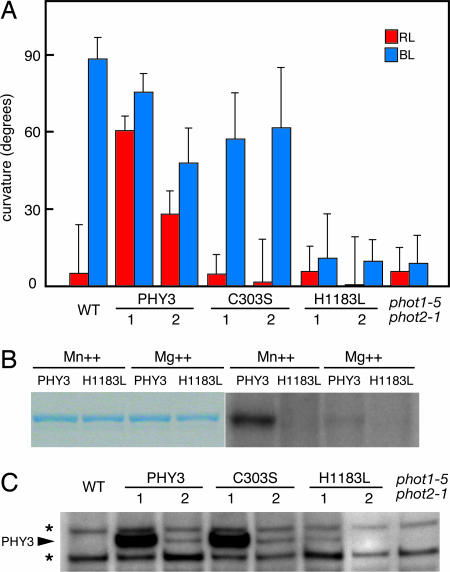Fig. 2.
PHY3 can act as phototropin as well as phytochrome, and signal output from PHY3 depends on autophosphorylation activity of the Ser/Thr kinase domain. (A) Phototropic response of Arabidopsis seedlings. Wild type, two independent transgenic lines expressing either wild type PHY3 (PHY3–1, -2) or mutated-PHY3 (C303S-1, -2; H1183L-1, -2), and phot1–5 phot2–1 were grown in the dark for 3 days and irradiated by unilateral BL (10 μmol·m−2·s−1) or RL (1.0 μmol·m−2·s−1) for 16 h. Each bar indicates a mean of 15 measurements with standard deviations. (B) Autophosphorylation activity of PHY3 protein kinase domain expressed in E. coli. Affinity-purified recombinant protein of either wild-type PHY3 (PHY3) or mutated PHY3 (H1183L) was used. For phosphorylation assay, either divalent manganese (Mn++) or magnesium (Mg++) was included in a reaction buffer. Coomassie brilliant blue staining (Left) and autoradiography (Right) of the same gel are shown. (C) Western blot analysis of PHY3 protein. Microsomal membranes prepared from dark-grown transgenic Arabidopsis expressing PHY3, C303S, or H1183L mutants were probed with anti-PHY3 polyclonal antibody. An asterisk on the left indicates a nonspecific band that was cross-reacted with PHY3 polyclonal antibody.

